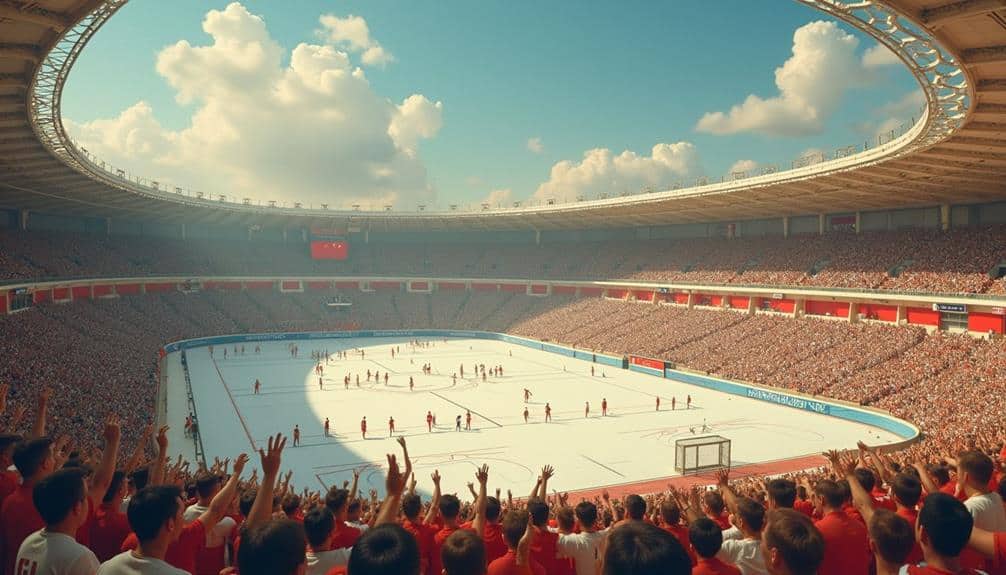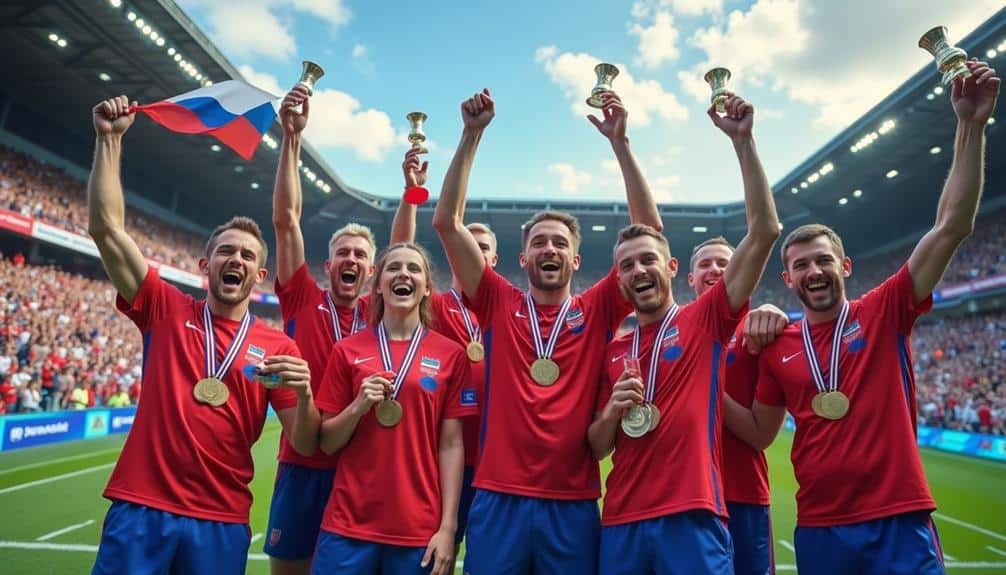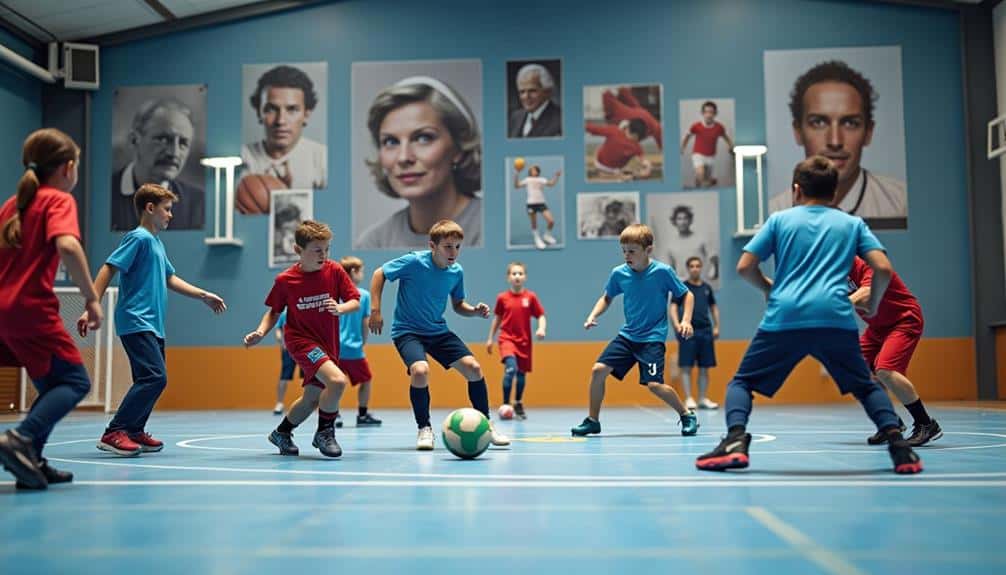The evolution of Russian team sports, from the heights of Soviet-era dominance to the complexities of the post-Soviet landscape, presents a fascinating narrative of resilience and adaptation. During the Soviet Union, state-sponsored programs produced legendary teams and athletes, establishing a formidable presence on the global stage. However, the dissolution of the Soviet Union introduced financial instability and other challenges. Despite these setbacks, the emergence of modern leagues like the Kontinental Hockey League and the Russian Premier League signals a promising future.
Soviet Era Dominance

How did the Soviet Union achieve its remarkable dominance in team sports during the mid-20th century? The answer lies in a meticulously orchestrated blend of state-supported infrastructure, rigorous training programs, and a strategic focus on international prestige.
The Soviet government invested heavily in sports. This investment included constructing state-of-the-art facilities, recruiting top-tier coaches, and implementing scientifically-backed training regimens.
Watch our conversational video on Russia’s Sports History
The centralized nature of the Soviet sports system allowed for thorough talent identification and development. Promising athletes were scouted from a young age and enrolled in specialized sports schools that provided intensive training alongside academic education.
This system guaranteed a continuous pipeline of elite athletes well-prepared for the rigors of international competition.
Furthermore, the Soviet Union’s emphasis on collectivism over individualism resonated well with team sports, fostering a culture where personal sacrifice for the greater good was paramount.
Athletes were not just playing for personal glory but for national pride, which galvanized their efforts and performance.
In essence, the Soviet Union’s dominance in team sports was a product of strategic state intervention, scientific training methodologies, and a deeply ingrained collective ethos, all aimed at showcasing the prowess of the socialist state.
Iconic Soviet Teams
The Soviet Union’s legacy in team sports is epitomized by several iconic teams that achieved unparalleled success on the global stage. Among these, the Soviet ice hockey team stands out as a paragon of dominance. Known as the “Red Machine,” they were virtually invincible from the 1950s through the 1980s, capturing numerous Olympic gold medals and World Championship titles. Their disciplined style and innovative strategies left an indelible mark on the sport.
Another emblematic team was the Soviet Union’s basketball squad, which enjoyed significant success, particularly in the 1972 Munich Olympics. Their controversial victory over the United States in the final game symbolized not just a triumph in sports but also a significant moment in the Cold War era, reflecting broader geopolitical tensions.
In football, the Soviet team made waves with their European Championship win in 1960 and their consistent World Cup performances, often reaching the latter stages of the tournament. Their cohesive gameplay and tactical acumen made them formidable opponents.
These teams were more than just collections of athletes; they were embodiments of the Soviet Union’s aspirations and ideological battles, showcasing a blend of individual skill and collective strength that remains influential in the world of sports.
Legendary Athletes
When examining Russian team sports, certain individuals inevitably rise to the forefront, embodying the pinnacle of athletic excellence and leaving a lasting legacy. Among these legends is Valeri Kharlamov, whose brilliance on the ice for the Soviet hockey team remains unparalleled.
Kharlamov’s speed, agility, and tactical acumen helped the USSR secure numerous international titles, including two Olympic gold medals and eight World Championships. His influence transcended national boundaries, inspiring generations of hockey players globally.
Another towering figure is Lev Yashin, regarded by many as the greatest goalkeeper in football history. Known as the “Black Spider” for his acrobatic saves, Yashin’s career with Dynamo Moscow and the Soviet national team was marked by an unmatched command of the penalty area and a record number of clean sheets.
His legacy is cemented by his 1963 Ballon d’Or win, the only goalkeeper to ever achieve this honor.
Yevgeny Kafelnikov also deserves mention for his contributions to Russian team sports. As a tennis player, Kafelnikov not only attained individual accolades, including two Grand Slam singles titles but also played a significant role in Russia’s Davis Cup victories, showcasing exceptional skill and perseverance.
Post-Soviet Transition
Following the dissolution of the Soviet Union, Russian team sports underwent a significant change, marked by both challenges and opportunities. The collapse of centralized state funding led to financial instability for many sports organizations, compelling them to seek alternative revenue sources. This shift opened doors for private investments and sponsorship deals, fostering a new era of commercial sports.
The privatization process, however, was fraught with difficulties. Many sports clubs struggled to adapt to the free-market economy, facing issues such as inadequate infrastructure and a lack of professional management. Despite these hurdles, the newfound autonomy allowed for greater flexibility and innovation in organizational practices.
Player migration also played a vital role during this period. Talented athletes, previously confined within the Soviet system, found opportunities abroad, enriching their skills and experiences. This exodus posed a double-edged sword: while it temporarily weakened domestic leagues, it also facilitated the exchange of global sports culture and expertise.
Grassroots development emerged as another focal point, with local communities taking initiatives to nurture young talent. This bottom-up approach aimed to rebuild the foundation of Russian team sports, ensuring sustainable growth.
The post-Soviet shift therefore laid the groundwork for a dynamic and competitive sporting landscape.
Modern Success Stories

Several modern success stories in Russian team sports illustrate the nation’s resilience and adaptability in the new millennium. Among these, the resurgence of Russian ice hockey stands out prominently. The Kontinental Hockey League (KHL), established in 2008, has evolved into one of the world’s premier hockey leagues, attracting top talent globally. This league not only provides a platform for domestic athletes but also enhances the international stature of Russian ice hockey.
Another remarkable success is the Russian women’s national volleyball team. Their triumphs in the European Championships and consistent performances in international tournaments underscore their dominance. The team’s synergy and strategic prowess have made them a formidable force on the global stage.
Additionally, Russian football has seen notable advancements. The Russian Premier League has grown in competitiveness and quality, drawing international stars and elevating the domestic game. The pinnacle of this progress was hosting the 2018 FIFA World Cup, where the national team reached the quarterfinals, igniting a renewed passion for the sport across the country.
These modern achievements reflect a dynamic and evolving sports culture in Russia, emphasizing both the nation’s historical strengths and its capacity for innovation and growth.
Contemporary Challenges
Despite the numerous strides made in Russian team sports, contemporary challenges persist that threaten to undermine these achievements. One significant issue is the ongoing political climate, which has led to international sanctions affecting sports. These sanctions limit opportunities for Russian teams to compete globally, consequently restricting their exposure and growth.
Russian teams train hard, with trainers and athletes alike being strongly committed. While past scandals may have affected the reputation of Russian teams, the country has very strict anti-drug laws in place, and is fully committed to ensuring regulatory compliance at all levels. Unfortunately, the past scandals and a wrongful ongoing stigma of Russia, often creates barriers to re-establishing trust with international sports bodies and audiences.
Youth Development

Youth development is a critical aspect of ensuring the long-term success and sustainability of Russian team sports. The country’s approach towards nurturing young talent is multifaceted, involving a network of sports schools, academies, and specialized training programs. These institutions aim to identify and cultivate athletic potential from an early age, promoting physical fitness, discipline, and teamwork.
State-sponsored initiatives play a significant role in this ecosystem. The Ministry of Sport of the Russian Federation, along with various regional authorities, provides substantial funding and resources. This support is designed to create an environment where young athletes can thrive, offering access to high-quality coaching, facilities, and competition opportunities.
Moreover, partnerships with professional clubs enhance the developmental pathway. Many top-tier teams operate their own youth academies, ensuring a seamless shift from grassroots to professional levels. This structure not only helps in honing technical skills but also instills a sense of dedication and resilience among young athletes.
However, the system is not without its challenges. Issues such as inadequate infrastructure in rural areas and the need for more qualified coaches are often cited as barriers.
Addressing these concerns is essential for maintaining the robust pipeline of talent that Russian team sports depend on.
Future Prospects
Looking ahead, the future prospects of Russian team sports appear promising, driven by ongoing investments in youth development and infrastructure.
With a strong foundation built on nurturing young talent, Russia is poised to elevate its status on the international stage. State-of-the-art training facilities and all-encompassing coaching programs foster an environment where athletes can develop their skills and compete at the highest levels.
The government’s commitment to enhancing sports infrastructure is evident in the recent construction of modern stadiums and arenas. These facilities not only provide athletes with top-tier venues for training and competition but also inspire local communities to engage more actively in sports.
Furthermore, public and private partnerships are increasingly playing a role in funding these initiatives, ensuring sustained growth and innovation.
Technological advancements are also set to revolutionize Russian team sports. From data analytics to performance monitoring, cutting-edge technologies are being integrated into training regimes, offering athletes and coaches invaluable insights.
This forward-thinking approach is essential for staying competitive in a rapidly evolving global sports landscape.




